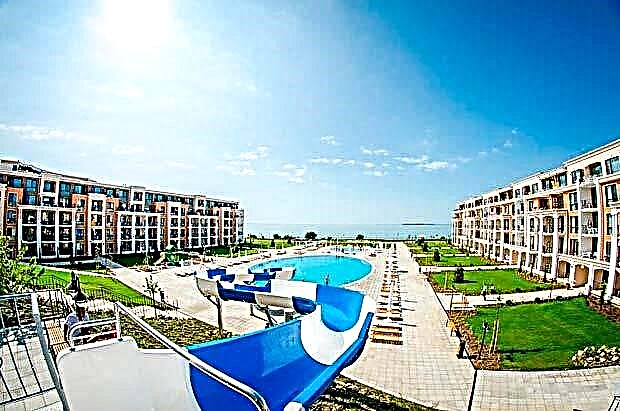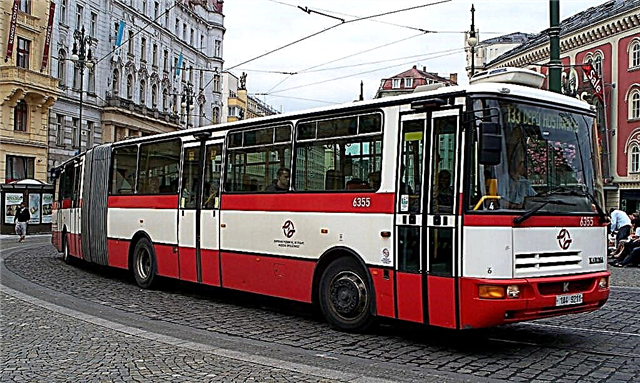Wherever you go, in most cases, you cannot do without public transport. This method of transportation is not only the most convenient, but also the cheapest. It should be understood that each country has its own rules and nuances of using this type of transport. Therefore, it is worthwhile to familiarize yourself with them in advance so as not to get into an unpleasant situation. Using the example of the most popular tourist cities in the world, we will try to understand the peculiarities of travel by buses, trams and metro.
Prague

The Czech capital offers guests a wide range of means of transportation around the city. There are underground and surface railways, buses and even funiculars. Due to the fact that Prague belongs to compact settlements, only three metro lines are laid underground, marked with different colors. This type of transport is the most popular not only among the guests of the capital, but also among the local population. After all, you can get from one end of Prague to the other in just a few minutes! Accordingly, you can have time to see more sights.
The convenient working schedule of the Czech subway corresponds to this, the carriages of which are ready to ride tourists through long tunnels until midnight. You can buy a ticket at any station. Bus routes are no less popular. You can buy a pass for this type of transport at any kiosk or even a hotel. Buses, like trams, run on schedule every 30 minutes to ensure your mobility. But the funicular runs every 15 minutes in only one direction - towards the Petřín Upland.
German cities

There is a more practical transportation system in Germany. Here you can buy travel documents both for 1 trip and for an unlimited number of trips within a certain amount of time. It is very practical and saves money. It is interesting that the settlements are divided into several zones - the central one and the suburbs, which are marked with different colors. But you can move around all with a single ticket. Shuttle trams and buses run around the clock.

As an alternative means of transportation, tourists are offered the metro, which combines a network of underground and surface trains. Trains run until 1 am.
Amsterdam

The most popular form of transport here is the tram. The city provides as many as 16 railway lines, which penetrate into the most remote areas of the Dutch capital. You can buy a ticket both when boarding at the conductor and in any public place. And you can follow the schedule using electronic boards, which are located everywhere. If you have not been to Amsterdam before, it will be useful to find out that you can get inside the car by pressing a special button that opens the doors. And in the dark, you can get around with the help of night buses, which stop only on demand.
Stockholm

Stockholm has a similar system of transport interchanges. The metro is divided into three lines that start from the central railway station. Local stations in themselves can claim to be a work of art, each of which is artistically decorated. After visiting them, there is an impression comparable to a visit to an art gallery. As an alternative urban transport, buses have been proposed that will take tourists anywhere in the city. Be aware that you will not be allowed on board without a ticket, so make sure you purchase a travel document in time, which can cover both one and several trips.
Oslo

The Norwegian capital is pleased to offer four options for the movement of tourists at once. In addition to the already familiar underground and surface facilities, guests of the city can appreciate the advantages of ferries. With their help, you can get to one of the nearby islands. You can buy tickets for all types of transport at a ticket machine or a special kiosk. They give the right to use the services both once and for a certain time. By the way, buses are divided into day and night. In the latter, you will not be able to use a regular pass.
Austria and Poland

The capitals of these neighboring states have an extensive network of metro, buses and trams. And if in Vienna the most popular is the underground mode of transportation, the branches of which run under all districts of the city, then in Poland ground travel is preferred. If in Austria it is allowed to purchase a single document for all types of travel, then in Warsaw you will have to buy a ticket for each type of transport separately. It is also common that bus routes are divided into night and day, and travel documents make it possible to make a certain number of trips.
London

In London, the easiest way for tourists to get around is by tram or by double-decker buses, which have already become legends of the island state. Transport works around the clock, and you can pay for the service using a special electronic Oyster card, which you should first replenish using the terminal. You can also ride the subway, but be careful: the railway lines are divided into several zones and lines, and each has its own document.
Paris

A tourist attraction Paris offers many tourists a wide range of public transport options. There are buses, trams, metro, and even electric trains.
You can buy a ticket almost everywhere - from a newsstand to information centers and bus stops, and depending on its type, you will be able to make a one-time trip or ride for several days. Accordingly, this also affects the cost.

But Paris Visite travel documents are in special demand, the owner of which will be able to ride any vehicle for a certain period.
How to save money in Europe in more detail in our life hack.











